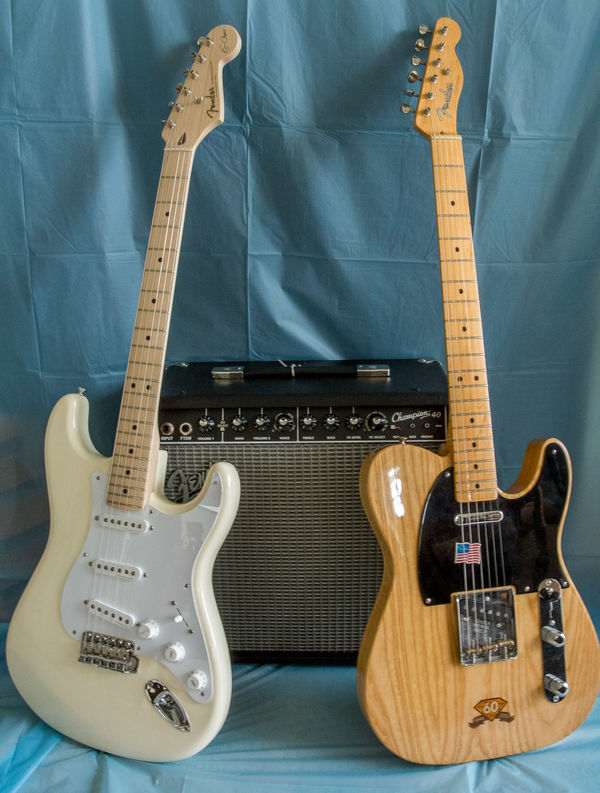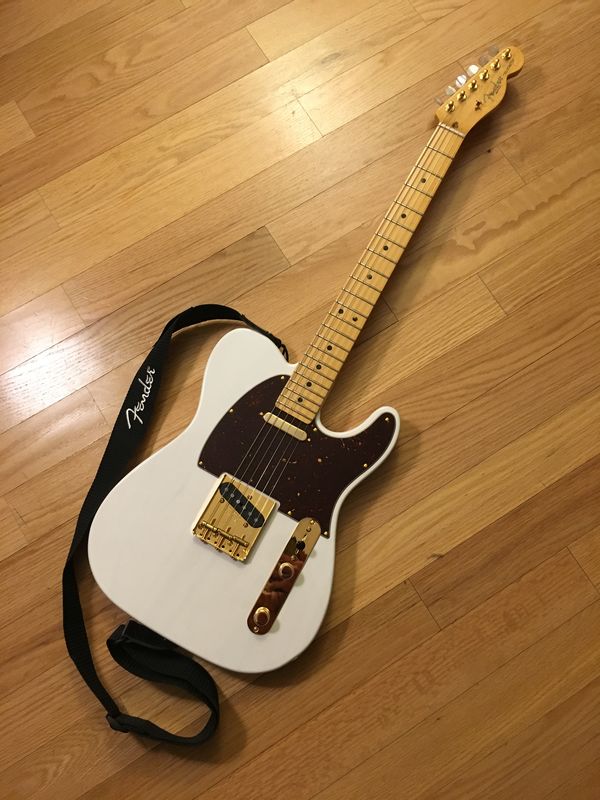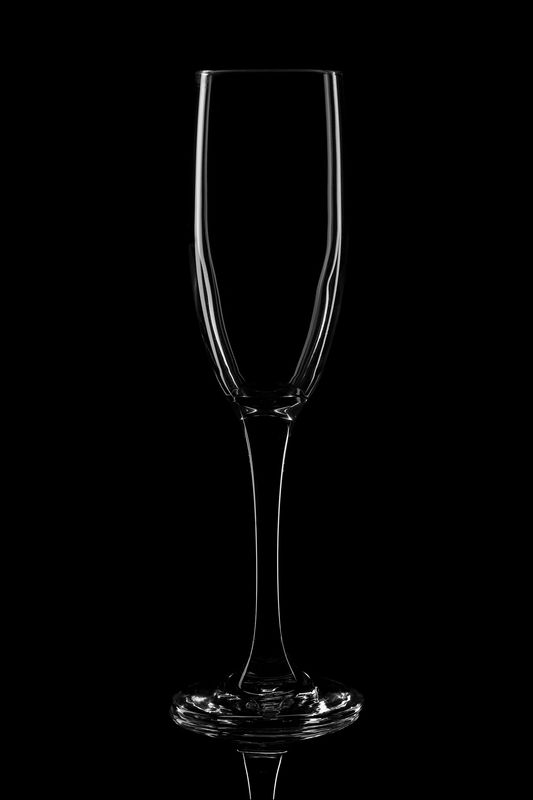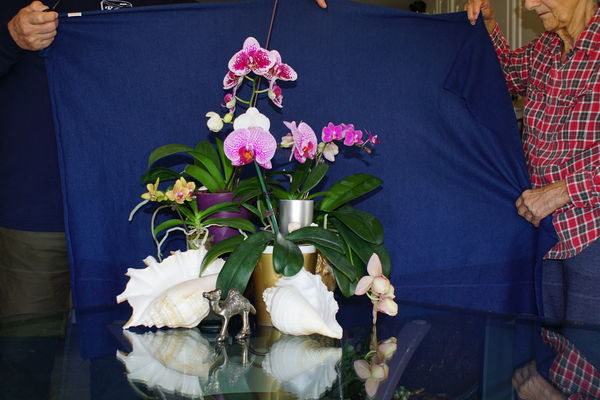About Those Backdrops...
Jan 20, 2019 20:52:04 #
I'm known here among a small circle of photographers as primarily a landscape photographer. But there is another area in which I want to delve and improve: Object photography. To be precise, I like photographing guitars. And other inanimate objects.
Believe it or not, it's a lot harder to take a good photograph of an object than just pointing a camera at it and snapping the shutter. I've seen stunning "portraits" of guitars, antique guns, jewelry, etc. A couple of years ago I purchased a photo studio backdrop "system" that included four umbrella lights, a backdrop holder, white and black backdrops, cords, stands -- all the basic stuff to shoot well-lit, posed photographs.
My problem is that I have never been able to hang a "smooth" backdrop. They are muslin, and always show fold lines, even after ironing them with a steam-shooting iron. I'm also limited by a half-size ironing board.
I've read that some photographers, instead of trying to get smooth, seamless backdrops, actually dampen the cloth and crumple it and stuff it into a bag. The end result being a non-uniform wrinkled backdrop. I may try that.
Lately I've taken to using bare wood floors. But the lighting is often such that I get reflections and flares, which ruin the shot. I've attached a couple of examples.
How do others use backdrops? Do you use plastic, and if so, how do you avoid flash hot spots? How do you get your backdrops wrinkle-free? Are there other solutions I haven't considered?
Believe it or not, it's a lot harder to take a good photograph of an object than just pointing a camera at it and snapping the shutter. I've seen stunning "portraits" of guitars, antique guns, jewelry, etc. A couple of years ago I purchased a photo studio backdrop "system" that included four umbrella lights, a backdrop holder, white and black backdrops, cords, stands -- all the basic stuff to shoot well-lit, posed photographs.
My problem is that I have never been able to hang a "smooth" backdrop. They are muslin, and always show fold lines, even after ironing them with a steam-shooting iron. I'm also limited by a half-size ironing board.
I've read that some photographers, instead of trying to get smooth, seamless backdrops, actually dampen the cloth and crumple it and stuff it into a bag. The end result being a non-uniform wrinkled backdrop. I may try that.
Lately I've taken to using bare wood floors. But the lighting is often such that I get reflections and flares, which ruin the shot. I've attached a couple of examples.
How do others use backdrops? Do you use plastic, and if so, how do you avoid flash hot spots? How do you get your backdrops wrinkle-free? Are there other solutions I haven't considered?
Jan 20, 2019 21:02:02 #
RWR
Loc: La Mesa, CA
Just Fred wrote:
I'm known here among a small circle of photographe... (show quote)
Keep more separation between subject and backdrop, so its out of focus.
Jan 20, 2019 21:02:05 #
Use seamless paper or velveteen if you want to eliminate wrinkles. I started with a muslin and after using paper, I've never gone back. If you shape light and work with the inverse square law, you also have other options.
This was shot with a octabox and a piece of foamcore to create negative fill producing an interesting rim light.
This was shot with a octabox and a piece of foamcore to create negative fill producing an interesting rim light.
Jan 20, 2019 21:03:11 #
Try moving the subject far enough in front of the backdrop to make backdrop O.O.F. Try paper backdrops, or use a fuzzy blanket. Or shoot subject on black velvet.
Jan 20, 2019 21:03:20 #
You could try stretching the cloth from the sides to get wrinkles out. I do stuff mine in a bag for storage. Steamers can help get wrinkles out as well. The backdrop in your photo looks kind of thin which may show off more wrinkles. Have you tried washing it and then tumbling it in the dryer? Watch the heat settings as some cloths can’t handle much.
As for the bare floor maybe try to take advantage of the shiny reflections to show off the sheen of the guitar. Maybe put some colored gels in two of your lights to emphasize the shine and big diffusers in front of the white lights to minimize hot spot reflections. Also just changing the position of the lights so the reflections don’t show in the images so much.
As for the bare floor maybe try to take advantage of the shiny reflections to show off the sheen of the guitar. Maybe put some colored gels in two of your lights to emphasize the shine and big diffusers in front of the white lights to minimize hot spot reflections. Also just changing the position of the lights so the reflections don’t show in the images so much.
Jan 20, 2019 21:04:10 #
Taking pictures of my wife's flowers, I've found a cheap, thin blanket (which usually stays wadded up in the car), when hung pretty much provides a non-wrinkled background
Jan 20, 2019 21:11:32 #
You should be able to iron out those wrinkles. Get a spray bottle, set the nozzle to mist, not stream, and spray the entire cloth with clean water. Roll it up, let it sit for a couple hours, and you should be able to iron it easily.
Start with the damp fabric on your side of the ironing board. As you iron, slide the ironed fabric away from you so it falls on the other side of the ironing board. That should help avoid more wrinkles.
Iron one half, then start at the same end, and iron the other half.
If your just using steam, your iron pbly isnt hot enuf, and, or ironing too rapidly. Also easier to burn if you're not used to ironing.
See.. Easy!
Start with the damp fabric on your side of the ironing board. As you iron, slide the ironed fabric away from you so it falls on the other side of the ironing board. That should help avoid more wrinkles.
Iron one half, then start at the same end, and iron the other half.
If your just using steam, your iron pbly isnt hot enuf, and, or ironing too rapidly. Also easier to burn if you're not used to ironing.
See.. Easy!
Jan 20, 2019 23:04:51 #
RWR wrote:
Keep more separation between subject and backdrop, so its out of focus.
That's exactly it!
Jan 20, 2019 23:45:22 #
RWR wrote:
Keep more separation between subject and backdrop, so its out of focus.

Yes, common mistake.
A background should be....in the background.
If possible, far enough back so that the subject lighting does not affect the background lighting.
:
Jan 21, 2019 02:55:54 #
If one needs to light the background (example turning it white) it's still preferential to have a wrinkle free surface. It can become tricky when over-lighting a white background hoping to remove wrinkles because at one point the background can and will become the light source. I still say seamless paper offers the least path of resistance. Hand painted canvas can be very flattering but it's usually expensive and requires extra care. I'm certainly not a professional but I've used muslin, velveteen and paper. Professional studios tend to have a variety depending on the effect they wish to achieve.
Conventional thought suggests adequate separation of the subject to the background but I've seen MANY times where a photographer will place a subject almost against the background to either avoid lighting the background or to light overhead creating a natural vignette by using the inverse square with light fall off.
Joel Grimes uses that technique frequently. Here's just one example.
https://www.youtube.com/watch?v=qt7ajMAiQaQ
The real answer regarding distance to the background and the subject is "it depends" and breaking the conventional rule does apply when needed.
Conventional thought suggests adequate separation of the subject to the background but I've seen MANY times where a photographer will place a subject almost against the background to either avoid lighting the background or to light overhead creating a natural vignette by using the inverse square with light fall off.
Joel Grimes uses that technique frequently. Here's just one example.
https://www.youtube.com/watch?v=qt7ajMAiQaQ
The real answer regarding distance to the background and the subject is "it depends" and breaking the conventional rule does apply when needed.
Jan 21, 2019 05:57:37 #
I have an old ('60s) Fender Kingman flat top I want to sell if you know anyone.
Jan 21, 2019 07:02:10 #
Just Fred wrote:
I'm known here among a small circle of photographe... (show quote)
To take a page from "hanging wall paper", you can peg the corners on top of the feed bar, stretching the fabric taught. Get a PVC pipe wider than the fabric and place it on the fabric below your bottom sight line, again stretching out the lower part of the fabric background and pegging it (good clamps). Using a steam source for fabrics, go up and down the wrinkles until they are smooth enough not be as noticeable. Steaming from behind would be best. Consider it as a stretched fabric on a frame. Ironing on the ironing board allows for more wrinkles to form when moving the fabric around.
Jan 21, 2019 08:26:32 #
billpilot
Loc: Baltimore County, MD
I've had good luck with using a large photo mat. I usually have a number on hand as I do my own matting.
They come in all kinds of colors.
They come in all kinds of colors.
Jan 21, 2019 09:19:52 #
RWR wrote:
Keep more separation between subject and backdrop, so its out of focus.
That is spot on. Also try to keep the light off the background, or light it so brightly that it loses detail.
But if you still have problems, try PhotoShop and replace the background. The select subject tool is really good and you can just put it on a different background. If you don't have PS, Affinity is cheaper, and you can do the same there.
I take a picture of the background that I want to use. Defocus to eliminate some of the lines (but start with an ironed sheet first of all). Process the background to get the best look and save it. Then use it as the background for your subject.
You can also get some "wrinkle free" cloth backdrops on line. They are much better, but not perfect. They are a good starting place though if you can't maintain that separation.
Jan 21, 2019 09:52:55 #
mizzee
Loc: Boston,Ma
What you need is a steam wand. Hang your backdrop, then use the hand steamer to remove the creases. It also works well for clothes! I threw out my iron since I got my Rowenta Steamer. No ironing board required! Good luck
If you want to reply, then register here. Registration is free and your account is created instantly, so you can post right away.











